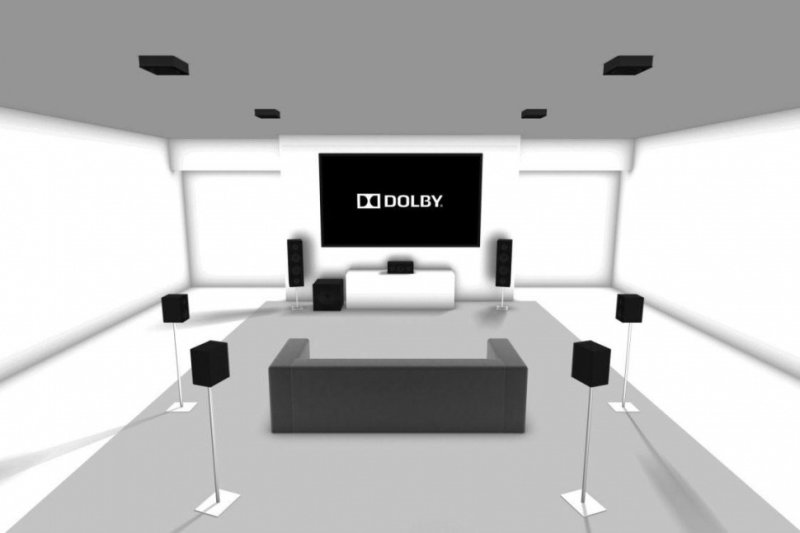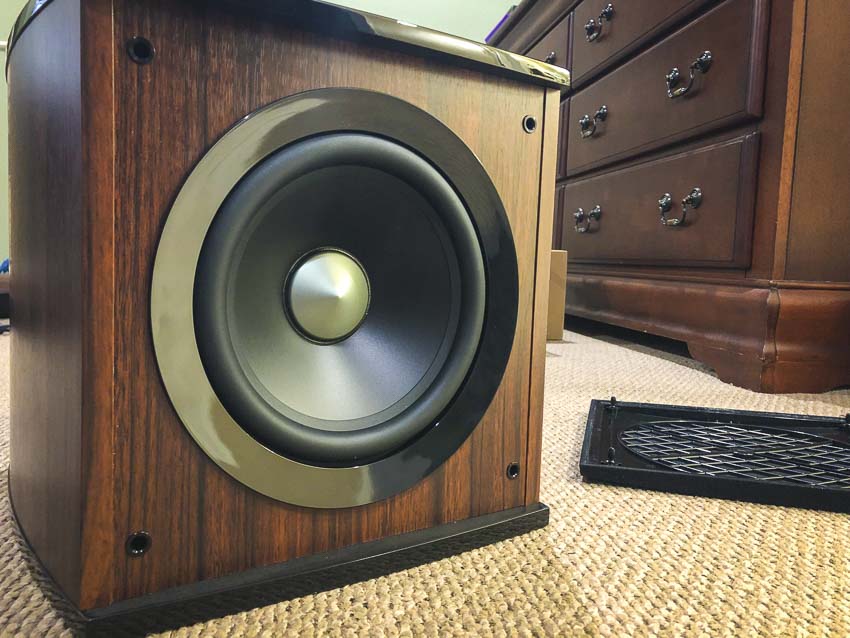Six Living Room Audio Upgrade Tips
So you want a living room audio upgrade. You are not the only one. One of the most popular questions we answer on the AV Rant Podcast is about taking a regular room and making it sound better. While budget will always be a concern, there are some simple steps you can follow.
Problem 1: Dialogue Intelligibility

If you find yourself saying, “What did they say” often, you have a dialogue intelligibility problem. The issue is that the speakers in your TV stink. Turning up the TV doesn’t solve the problem because the speakers start to distort. This just makes the problem worse. There are two possible solutions for your living room audio upgrade: Room treatments or speaker upgrade.
Living Room Audio Upgrade 1: Absorption
Where is your couch? Is it pushed up against a wall? If so, you may have what we call a slap echo. This is when the sound bounces off the back wall and arrives at your ear just a fraction after the direct sound. This confuses your brain. It doesn’t know which is the primary sound so it tries to pay attention to both. Since it really can’t, you experience this as muddled sound. You can test if you have a slap echo by putting something thick and plush behind your head while watching TV. A thick blanket or comforter will do. If you can suddenly understand the dialogue better, you have a slap echo. Now, you can live with a blanket back there, or you can buy an absorptive panel. They come in many colors and can even be printed with images on them.
Learn more: Understanding Room Acoustics – A Primer
Living Room Audio Upgrade 2: Soundbar
Your other option is to upgrade your speakers for more and better sound. Many people will opt for a soundbar or similar option. While “hardcore” AV enthusiasts will deride you for this decision, we see it as a really worthwhile step. It is a fairly easy way to increase the volume without having to add a bunch of wires and speakers in your room. Before you buy, decide what you really want. Are you looking just to add more sound to the front of your room (make your TV louder) or do you eventually want to add surround sound (speakers to your sides or behind you, and maybe a subwoofer)? There is nothing wrong with just wanting more sound without wanting to expand further.
If you just want more sound, consider a soundbar. A soundbar is meant to be a standalone speaker that isn’t necessarily meant to be connected to a surround setup. They are cheaper than surround bars which may have additional speakers included in the package. There are lots of options. One of the things we like about soundbars is that they can often be connected to your current TV mount (if you have it wall mounted. This is a great option for your living room audio upgrade. While it won’t necessarily fix the slap echo issue discussed above, it can help by changing the angle of the sound. You may want to do both (add absorption and a speaker upgrade). This eliminates the slap echo while giving you more sound in your room.
Learn More: Connecting Soundbar to TV
Problem 2: No Surround Sound

If what you want is to get the surround sound experience, you have two options – add more speakers to your system or try to simulate more speakers. Simulating surround sound requires either the use of DSP (digital signal processing) or a lot of very small speakers. The former is the path that most manufacturers take, while the latter is solely the purview of Yamaha.
Living Room Audio Upgrade 3: Virtual Surround Sound
Yamaha Digital Sound Projectors use a number of small drivers to steer the sound around your room. We’ve tested a number of these out, and they are very room dependant. If your room lends itself to the process, it can be extremely effective. But if it doesn’t, you don’t need to worry. Yamaha has included the more traditional DSP solutions.
The traditional DSP solution for virtual surround sound changes the phase of the sound it produces to trick your ear into thinking the sound is coming from somewhere other than directly from the speaker. The effectiveness of these solutions depends on the particular implementation as well as how close to directly in front of the speaker you sit. If you sit off to the side, they tend not to work very well.
Check out virtual surround sound bars on Amazon
Living Room Audio Upgrade 4: More Speakers
When planning your living room audio upgrade, you may decide you have space either to the sides of your couch (preferred) or behind you (not optimal but will work just fine) for additional speakers. You can pick one of the surround bar options with additional speakers included. These are called “wireless” but they still need power. Just be aware that you’ll need to plug them in somewhere.
But perhaps you want a more traditional home theater setup with a receiver and everything. You could pick up any receiver and connect the speakers with speaker wire. Be aware that receivers are now coming with wireless options. Denon has HEOS and Yamaha has MusicCast. These solutions require special speakers or external amps/wireless receivers to power the speakers. You’ll find this to be a more expensive but more robust option for wireless surround speakers.
Find great deals on Denon and Yamaha receivers at Accessories4Less
Problem 3: Lack of Bass

If you’ve visited a decent cinema, you know how thunderous the bass can be. Experiencing that bass kick in the chest at home is the goal of many a home theater enthusiast. If you have a dedicated room for a theater, it isn’t hard to get enough bass to recreate that experience. But a living room audio upgrade can be not only implausible but inadvisable.
To get that big bass experience, you need to fill the entire space with bass. In a small room, that isn’t hard. But look around your living room. Not just the area where you are sitting, but all the areas that are not isolated by doors. That is the space your subwoofers need to fill for you to feel that chest thump. This living room, kitchen, hallway, stairs…all of it. This requires a LOT of bass which is both expensive and…loud.
If you don’t want to be tracking down rattles in your home from every dish in your kitchen, every picture on the wall, every door, every window shaking with each explosion, you’ll want to consider other options.
Living Room Audio Upgrade 5: Lower Your Expectations
The easiest way to “upgrade” your bass it to realize that getting that bass kick just isn’t going to happen. Instead, you can place a subwoofer (that will need to paired with a receiver) “nearfield.” That a fancy way to say to place it close to where you are sitting. While it won’t necessarily sound all that much louder, you might get a bit of the tactile sensations.
You don’t even have to go all the way to buying a full receiver and a full-sized subwoofer. If you are already shopping for a surround bar, you could get one with an included “subwoofer.” We put the subwoofer in quotes because it really isn’t a sub. A subwoofer can play sounds below the range of human hearing (those sounds you FEEL – the ones you are looking for). These “subs” are really bass modules. They extend the range of the surround bar so that you get more bass. And that is valuable. Just don’t call them subs. Realizing that chest-thumping bass isn’t feasible in your living room audio upgrade isn’t admitting defeat. It’s admitting that you need a dedicated room in the near future.
Living Room Audio Upgrade 6: Tactile Transducers
If you want to simulate the effect of chest-thumping bass, you can place a full-sized subwoofer near your couch and hope it shakes your couch, or you can get a tactile transducer system. Tactile transducers (often called bass shakers) attach to your couch and physically shake it when certain bass frequencies are played. This gives you the sensation of room rattling bass without all the actual bass.
We do not recommend adding a tactile transducer system without at least a bass module in your room. A full subwoofer would be better. This allows the upper bass frequencies to be played giving your ear the queue that there is bass happening in the room. Then the transducer completes the effect. If you add transducers without some source of bass, the couch will start shaking with no audible queue as to why.
Visit Amazon for Tactile Transducers
Completing your Living Room Audio Upgrade
If you follow this guide, we guarantee that you will have a better living room audio experience. While there are plenty of ways to increase the fidelity of your living room audio, these six tips will definitely help.


